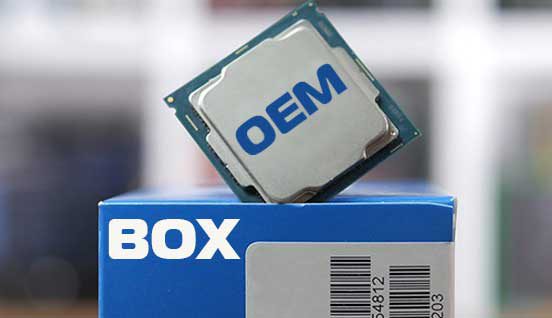

Goods have not only to be produced, they have also to be transported to the markets and put into customers’ hands. For this purpose, means of transport, like railways and motor-trucks, are essential. Capital is valued for the very useful functions it performs in the production of wealth. In fact, production would almost come to a stand-still without adequate and suitable supply of capital. We conduct live sessions for businesses to understand the course content in depth. The pillars of our company conduct interactive sessions to give valuable insights.

In certain businesses, sales are made quickly so that stocks are soon exhausted and new purchases have to be made. In this manner, a small sum of money invested in stocks will result in sales of a much larger amount. Considering the volume of sales the amount of working capital requirements will be rather small in such types of businesses.
In the service industry, there is no inventory, and therefore, one big component of working capital is already avoided. So, the nature of the industry is a major factor in determining the working capital requirement. Capital provides subsistence to the labourers while they are engaged in production.
Most retailers sell more product during the fourth quarter—that is, during the holiday season—than at any other time of the year. Thus, we see that employment will increase as capital formation is stepped up in the economy. Nature cannot furnish goods and materials to man unless he has the tools and machinery for mining, farming, foresting, Ashing, etc. If man had to work with his bare hands on barren soil, productivity would be very low indeed. Even in the primitive stage, man used some tools and implements to assist him in the work of production. Primitive man made use of elementary tools like bow and arrow for hunting and fishing-net for catching fish.
With https://www.cash-for-houses.org/new-jersey/cash-for-my-house-toms-river-nj/, you can sell your house in any condition – no repairs necessary!
Working Capital vs. Fixed Capital/Assets
Under this method, the Working Capital requirement of a firm is sought to be determined with reference to the position of current assets and current liabilities deducting the latter from the former. As most of the public sector undertakings are capital intensive , the ratio of current assets to fixed assets is very low e.g., heavy engineering, oil refining etc. If current assets exceed current liabilities, it is called positive working capital and if current liabilities exceed current assets, it is called negative working capital. Needless to mention, if gross concept of working capital is used, there will always be positive working capital . Liabilities which fall due after a comparatively long period are known as fixed or long-term liabilities. As distinguished from current liabilities, fixed liabilities are, therefore, those which are not repayable within one year of the Balance Sheet date’, or normal operating cycle of the business.
- The distinction between fixed and variable working capital is of great significance particularly in raising the funds for an enterprise.
- It may mean unnecessary accumulation of inventories which increases the chances of inventory mishandling, waste, theft and accumulation of old items which are ultimately disposed of at low prices or just discarded.
- However, only companies or business owners with a high credit rating are eligible for an unsecured loan.
Working capital includes only current assets, which have a high degree of liquidity — they can be converted into cash relatively quickly. Fixed assets are not included in working capital because they are illiquid; that is, they cannot be easily converted to cash. The balance sheet lists assets by category in order of liquidity, starting with cash and cash equivalents. It also lists liabilities by category, with current liabilities first followed by long-term liabilities. Working capital is a financial metric calculated as the difference between current assets and current liabilities.
Working Capital is the amount of funds necessary to cover the cost of operating the enterprises. Working capital means the funds available and used for day-to-day operations of an enterprise. It consists broadly of that portion of assets of a business that are used in or related to its current operations. In contrast, the current ratio includes all current assets, including assets that may not be easy to convert into cash, such as inventory. Working capital can also be used to fund business growth without incurring debt.
A company has positive working capital if it has enough cash, accounts receivable and other liquid assets to cover its short-term obligations, such as accounts payable and short-term debt. But, too much reliance on short-term sources is more risky since it will have to be renewed on a continuous basis for financing a part of permanent current assets. Thus, long-term sources are used for the acquisition of fixed assets plus a part of permanent current assets and short-term sources are used for the part of permanent current assets plus temporary current assets.
Factors That Affect Working Capital Needs
Usually the seasonal or variable needs of working capital are financed by temporary borrowing. The management has another objective and that is to maintain a smooth and rapid flow of funds in order to enhance the efficiency of working capital or profitability of the firm. Since fixed capital is invested in long term assets, it becomes necessary to adopt various systems of estimating depreciation. On the other hand working capital is invested in short term assets which last for one year only. Hence it is not necessary to adopt special accounting system for them.
It facilitates expansion programmes of the enterprise and helps in maintaining operational efficiency of fixed assets. CreditworthinessCreditworthiness is a measure of judging the loan repayment history of borrowers to ascertain their worth as a debtor who should be extended a future credit or not. For instance, a defaulter’s creditworthiness is not very promising, so the lenders may avoid such a debtor out of the fear of losing their money. Creditworthiness applies to people, sovereign states, securities, and other entities whereby the creditors will analyze your creditworthiness before getting a new loan.
Importance of Working Capital Management
It is equal to the total sum of current assets only and it may represent both owned capital as well as loan capital used for financing the current assets. The cash position of the firm, however, may be higher or lower at the end of the period than at the beginning. For the cash balance to rise, the cash inflow from cash sales and the collection of receivables must be greater than cash outflow for labour, materials and other costs.
Finished products, many of which become obsolete over a period of time, long standing receivables much of which become unrecoverable, and item of almost permanent nature, like deposits with statutory authorities. It is not so easy to estimate the amount of Working Capital that may be required by a firm in order to maintain a particular level of operation. In other words, every firm finds it difficult to ascertain the Working Capital requirements which are a very practical and important problem. The requirements of working capital also depend on whether the profit is retained or distributed by way of dividends. Because, if dividend is paid out of profit, cash reserves of the firm is reduced to that extent for which amount of working capital is reduced by that amount.
Objectives of Working Capital Management
Normally, there is a time-lag between the creation of the provision for taxes and their actual payment. And in the period the resources as against this provision which remain within the enterprise may be used as a source of working capital. Every firm has to anticipate at the time of planning the initial capital structure of the company, the minimum amount of working capital that it would require to support is projected level of operation.
For example, say a company has $100,000 of current assets and $30,000 of current liabilities. This means the company has $70,000 at its disposal in the short term if it needs to raise money for a specific reason. To calculate working capital, subtract a company’s current liabilities from its current assets. Both figures can found in the publicly disclosed financial statements for public companies, though this information may not be readily available for private companies. Working capital, also called net working capital, represents the difference between a company’s current assets and current liabilities. Sometimes, the value of current assets is less than the current liabilities, it shows negative working capital.
Fixed capitals are the durable-use producer goods which are used in production again and again till they wear out. Machinery, tools, railways, tractors, factories, etc., are all fixed capital. Its application increases efficiency and the productive power of all the factors with which it is combined and used. We are MSMEx, an experienced MSME edtech company with highly qualified staff to help companies grow in their industry and attract more visitors online. Whether you are struggling to gain a competitive edge online or are working on bringing your business online, we are here to assist you. In a nutshell, the greater the working capital, the greater the profitability of the business operation, and vice versa.
The working capital required to meet the seasonal needs of the industry or business is known as seasonal working capital. For example, if an enterprise is marketing woolen garments, it needs more money for that purpose during winter months than in summer season. Similar is the case with a factory/business engaged in the production or marketing or coolers, refrigerators or air-conditioners. The estimated requirement of Working Capital for the budget period can be determined on the basis of the data contained in the Balance Sheet of the earlier or previous period. While inadequate Working Capital creates a lot of problems, an amount in excess of the requisite Working Capital which is not utilized properly and remains idle, can also increase the cost. Therefore, in order to avoid both these difficulties, a Working Capital Requirement Forecast is prepared after scrutinizing and analysing every aspect of business activity.
We have explained the different functions of capital, its characteristics, and how it is vital in production. We also reckon capital as an amount of money required to start a business. For debt capital, this is the expense of interest needed in reimbursement.
It takes into consideration of the fact that, if other things remain constant, infusion of fund in the business increases its working capital. In ordinary parlance, working capital denotes a ready amount of fund available for carrying out the day-to-day activities of a business enterprise. Net working capital is a financial measure that determines if a enterprise has sufficient liquid property to pay its bills which might be due in one 12 months or much less. Net working capital is calculated by subtracting a business’s present liabilities from its current belongings.
But it is interesting enough that cash locked up in the form of working capital is very high. The entire requirements of working capital of public sector undertakings were financed by the Government until recently. This percentage is arrived at by merely dividing the current belongings by the current liabilities.
But if the importance of materials is small, as for example, in an oxygen company, the requirements of working capital will naturally be small. If the industry is competitive, quick response to customer needs is compulsory, and therefore a higher level of inventory is maintained. Liberal credit characteristics of working capital terms are also mandatory with good service to survive in the market. So, the higher the competition, the higher the requirement for working capital. The debt-to-equity (D/E) ratio indicates how much debt a company is using to finance its assets relative to the value of shareholders’ equity.
This is needed to meet the additional cash requirements due to annual fluctuations in production and sales caused by seasonality. For example, if you’re an umbrella manufacturer, you will manufacture stock before the season commences, anticipating demand. Hence you will require extra funds to meet this temporary working capital need. On the other hand, trading and financial firms require less investment in fixed assets but have to investment large amount in current assets like inventories, receivables etc. The difference between current assets and current liabilities is called the net working capital.
For instance, in case of jewelers, a piece of jewelery may stay in the show-window for a long time before it catches the fancy of a rich lady. In such cases large sums o money have to be kept invested in stocks. But a baker or a new-hawker may be able to dispose of his socks quickly, and may, therefore, need much smaller amounts by way of working capital. In such a situation, seeking a working capital loan will help you restore balance. You can avail of a working capital loan from Bajaj Finserv in a Flexi format, which allows you to withdraw as and when there’s a shortage of liquidity and prepay when your blocked payments from debtors get cleared.